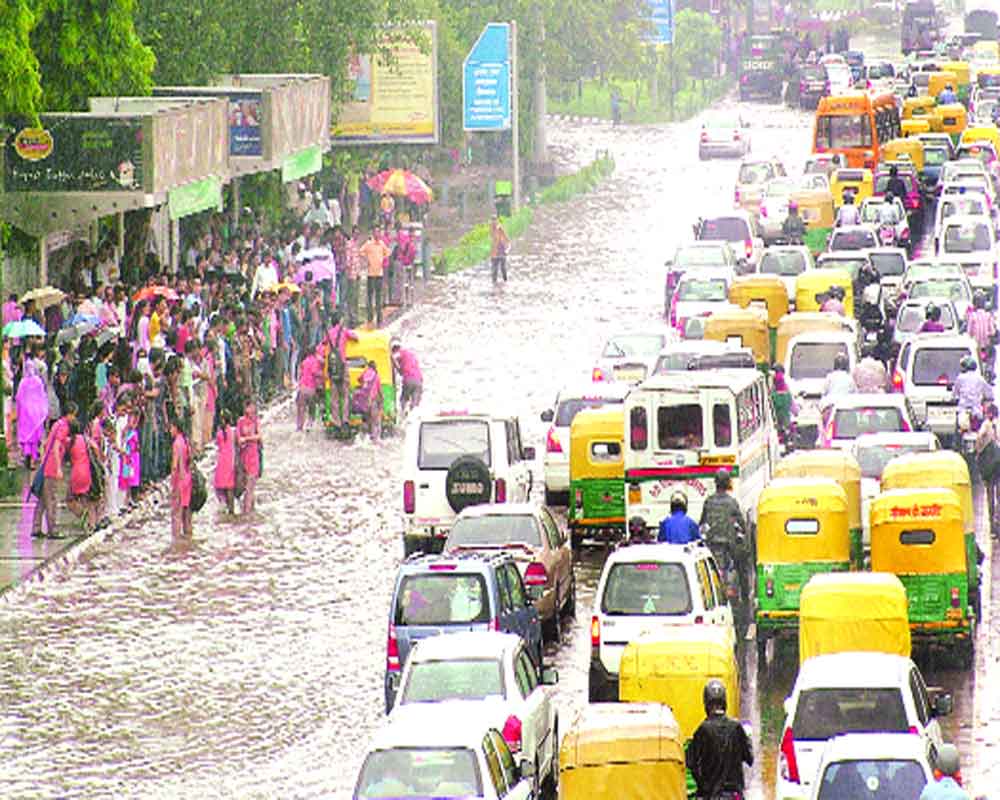The year 2023 brought forth a concerning reality for India, as every State and Union Territory experienced extreme weather events at least once, disrupting life, livelihoods, and the economy as resources were diverted to tackle flooding or extreme heat, volatile conditions driven by climate change.
These occurrences were not sporadic; rather, they persisted for approximately 318 out of 365 days, revealing a disturbingly recurrent pattern of climatic disruptions.
In what should be considered a climate change warning to India, the toll on human life was grave, with 3,287 recorded deaths attributed to these extreme weather events. Additionally, the devastation extended to the animal kingdom, with a staggering 1.24 lakh animal deaths reported. The agricultural sector, vital for the nation’s food security, bore a heavy brunt, with 2.21 million hectares of crop area suffering damage, leading to significant economic losses.
This widespread impact, detailed in the independent think tank Centre for Science and Environment’s “State of Environment 2024” report, underscores the severity of the challenges posed by climate change. The report said the climate-vulnerable country experienced extreme weather on 86 percent of days from January to September. State-wise, Himachal Pradesh emerged as the most heavily affected zone, enduring extreme weather conditions for 149 days, closely followed by Madhya Pradesh with 141 days.
Kerala and Uttar Pradesh also faced prolonged periods of extreme weather, each recording 119 days of such events.
The widespread nature of these occurrences is further underscored by the fact that eight States experienced over 100 days of extreme weather. The temperature increase was driven by human-caused climate change and boosted by the natural El Niño weather phenomenon.
The types of extreme weather varied, with heavy rains, floods, and landslides occurring on 208 days, while lightning and storms were prevalent for 202 days. Heatwaves persisted for 49 days, cold waves for 29 days, and cloudbursts were recorded on nine days, contributing to localised instances of intense precipitation.
Of particular concern was the duration of these extreme weather events, with India enduring 123 consecutive days of such conditions between June and September 2023. This prolonged exposure underscores the significant long-term implications for infrastructure, livelihoods, and ecosystem resilience.
The detailed analysis provided by the report offers valuable insights into the multifaceted nature of extreme weather events in India in 2023, emphasising the critical need for proactive measures to address their impacts and build a more resilient society in the face of ongoing climate change.
Climate experts warn that it has now been confirmed that global warming exceeded 1.5°C across the 12-month period between February 2023 and January 2024. This followed 2023 being declared the warmest year on record.
The United Nations also sounded an alarm that 2023 is set to be the hottest ever recorded. It demanded urgent action to rein in global warming and stem the havoc following in its wake. The UN’s World Meteorological Organisation pointed out that 2023 had shattered a whole host of climate records, with extreme weather leaving “a trail of devastation and despair”.
“It’s a deafening cacophony of broken records,” said WMO chief Petteri Taalas. “Greenhouse gas levels are at a record high. Global temperatures are at a record high. Sea level rise is at a record high. Antarctic sea ice is at a record low,” he said.
In light of these findings, urgent action is imperative. Comprehensive climate adaptation and disaster management strategies are needed to mitigate risks, enhance resilience, and protect vulnerable communities.


























